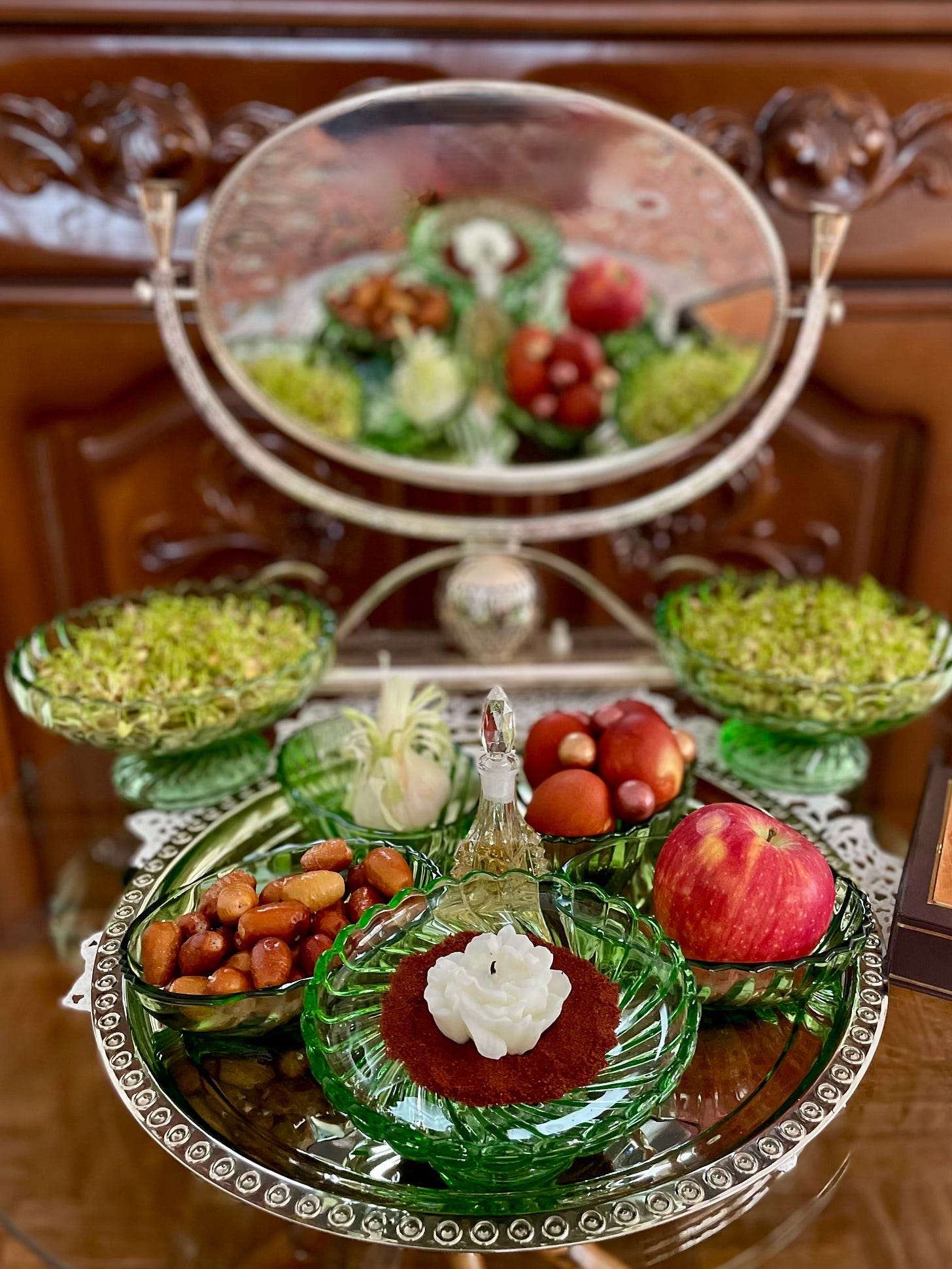Preparations for Bayram; Seeing in the new year with a happy home & heart
Part one: Air or Hava chaharshanbasi
It may seem a bit odd that I am writing about new year in late February, but not everyone on our planet starts new year in January. About a month ago, it was a Chinese New year of the snake. This new year is well known around the world, but Earth’s new year, that is, our planet’s new revolution around the sun, which begins on the vernal or spring equinox in the northern hemisphere is less well known in the West.
Since humans have been able to calculate our planet’s location in space, especially with the invention of the astrolabe, the exact moment of the solstices and equinoxes, including the spring equinox, has been predicted with precision. This year the beginning of Earth’s New Year will be on Thursday, March 20th, at exactly 09:01 London time. This is the moment of tahvil. Tahvil is an Arabic word, meaning transformation.
The celebrations that follow tahvil are known as Bayram or Yaz Bayrami, Spring Celebration in Turkic languages, and Nowruz or New Day in Iranian languages. Both terms are used interchangeably by Azeris, are transliterated, and pronounced differently across the whole region from Eastern Europe to Western China.
It is important that at the time of tahvil, we welcome the new year with clean and happy hearts and homes, alongside our loved ones either in person or, nowadays, virtually. We stand around a table laid out with seven symbolic items on a red table cloth, with a lit candle and we wish each other Bayramuz mobarakdi - happy new year. After exchanging good wishes, we eat something sweet, a gesture believed to bring good omens in the hope of having a year filled with happy occasions.
Depending on the time of day of tahvil, we either go back to bed (last year, it was at 3 AM) or we start our Bayram jorushi, which translates to see each other, indicating brevity. The following 12 days, and this year nights, are filled with brief visits to friend’s and family’s homes, starting with the recently bereaved and elderly, then working our way down to the newlyweds.
This year, since Bayram coincides with the Islamic calendar's month of Ramadan known as orushlukh in Azeri which means time of fasting. Jorush will take place at night after the fast is broken. Our Bayram celebrations culminate outdoors on a nationwide picnic on the 'unlucky' 13th day.
These customs are natural and intuitive, which is why they have survived across cultures and have been adopted by world faiths. Nowruz is recognised by UNESCO as part of the Intangible Cultural Heritage of Humanity.
You may have noticed I mentioned 7 symbolic items and the "unlucky” 13th, or the colour red which is the colour of Chinese New Year, and appears in Santa’s suit. These highlight the universality of some of our beliefs and customs. Given the rich history of this region, it is no surprise that it has influenced many global cultures.
During the Soviet era, many states, now independent countries, were prohibited from celebrating Bayram, but today, they do so in grand style. Across this vast region, every home, village, town, and country has similar but different traditions, beliefs, and foods associated with Bayram.
The word Bayram holds special meaning for me. My maternal family had a bogh (walled garden) in a hamlet called Bayram in East Azerbaijan in Iran, and the garden itself was known as Bayram Boghi. I was first taken there within a month of being born and continued visiting almost weekly until I was six years old. Whenever I hear the word Bayram, I am reminded of those idyllic times.
We Azeris believe, at this time of year, the smoke from our rooftop fires is carried by wind to the mountains, where it melts the snow, allowing water to flow, giving life to the soil. It is a time of rebirth and ressurection. Each of the elements above, hava or yet (air or wind), su (water), torpakh (soil) and ot (fire) are honoured. While we don’t know when this first started, how, or in what order, we do know they have persisted for millennia.
Nowadays, we have fixed months and days, but in the past, there were no structured calendars with twelve months or named days. Instead, dates were marked by seasonal activities e.g. “plow the field” or observations e.g. “birds build nests”, similar to a farmer’s almanac or Ko, the Japanese micro-seasons. Interestingly, Bayram falls in Aghlar-Jular ay in Azeri or the month of tears and laughter, because between late March and April there is sunshine and rain.
Also in a region with varied terrains and climates, people in the valleys would experience the arrival of warmth sooner than those at higher elevations meaning the celebrations would have been some time around the spring equinox.
However, over the last 1,500 years, the tradition has become to honour each element per week, over a four week period in the lead up to tahvil, on the eve of Wednesday (Tuesday after sunset), known as Charshanba jejasi. In keeping with that tradition, I am beginning my series this evening, or Charshanba jejasi with the element of Hava (air) or Yel (wind). Essential for life and in today’s terms, the digital smoke signals of the internet, to let you know about Bayram.
I look forward to sharing my personal Azerbaijani stories and preparations for Bayram with you in the charshanba which follow. These are more than cultural ritual; they are an intrinsic part of my identity and cultural heritage and I can’t tell you how excited I am.





So lovely to start the day reading this! Though this chilly gray morning makes Bayram seem a long way away still...